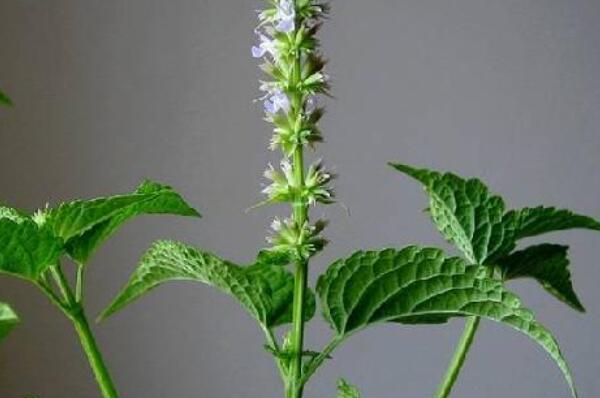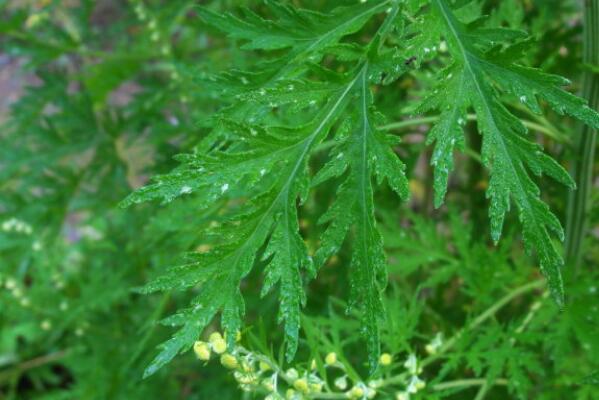What is the current purchase price of Huoxiang? How much are seeds? When to sow and harvest?
Huoxiang is also called Hexiang, Canggao, Shanfennel, etc., its corolla is light purple blue, about 8mm long, mature nut oval, flowering period 6- 9 months, fruit period 9- 11 months. So what is the approximate purchase price of Huoxiang at present? How much are seeds? When to sow and harvest? It is learned from Shuyang Seed Company that the price of Huoxiang seed is about 50 yuan/kg, and the sowing quantity per mu is 3-4 jin.

What is the current purchase price of Huoxiang?
1. Anguo market: the price of patchouli is relatively large this year, and the market has declined in the early stage. Recently, there have been continuous purchases, the supply has turned smooth, and the market has rebounded slightly. The price of patchouli in the market is between 8-9 yuan.
2. Bozhou market: affected by low price, driven by influenza epidemic situation, attention increased, and the market continued to improve. At present, the price of patchouli in Bozhou market is about 9 yuan; the price of patchouli is 10-11 yuan.
3. The market of patchouli in Maoming City and Gaozhou of Guangdong Province continues to rise. There are markets in Guangzhou, Jiangxi, Shanghai and other places. Pharmaceutical factories purchase goods, and the goods flow smoothly. As of today, the origin of patchouli cut section unified goods price 10 yuan, sub-unified goods 8 yuan.
4. Yulin market: In recent years, the production volume is relatively large. At present, the inventory in the hands of merchants is sufficient, the demand is general, and the market continues to be weak. The price of patchouli is between 7-7.5 yuan, and the cut price is 7.8-8 yuan. The merchants frequently enter and sell quickly.
When will the seeds be harvested?
1. Sowing:
Spring sowing. In the middle and late April, along the ridge according to the row i~25--30 cm shallow ditch, ditch depth 1-1.5 cm, seeds mixed with fine sand evenly withdrawn into the ditch. Cover soil 1 cm, slightly suppressed, soil too dry to irrigate water, mu seed quantity lo kg.
Autumn sowing. In 9 - 10 months, after plowing, leveling rake fine, in the ridge according to the plant spacing of 30 cm hole, hole depth of 3-6 cm, open big hole, hole bottom requirements flat. Mixed with decomposed human and animal manure and plant ash as base fertilizer, seed evenly inserted into the hole, covered with soil 1 cm, slightly suppressed can be.
Pogostemon rugosa is best sown in spring and autumn rainy season, seeds are good for light, germination temperature is 18-24℃, this leaf can be transplanted when 3-4, soil selection sandy loam, cultivation environment should be sufficient sunshine and good drainage, growth temperature is 21-27℃, night temperature 14-17℃, flowering from spring to autumn, during which topdressing can be applied to supplement nutrients.
2. Harvest:
6-7 When inflorescences appear but do not bloom, cut the whole plant and dry it. The South harvests for the second time in September and October. Generally 667 square meters yield 300-500kg. Chose sunny day and cut it off from the ground, transport it back to dry quickly, kang dry or dry in the shade for later use, yielding 4500~7500 kg per hectare. Pogostemon to stem green, dry, leaves, aroma rich for the best.
Attachment: Huoxiang planting method
1. The stubble fragrance likes humid climate and is not strict with soil requirements. Select sandy loam with loose soil, fertile and good drainage, flat or gentle slope, but avoid high dry land and low-lying land with accumulated water. Where the soil is sticky and hardened, poor drainage and shade should not be planted. After selecting the land, turn it 20--25 cm deep in autumn, break up the soil, remove impurities, apply farmer's j]p~3000 kg per hectare as base fertilizer, turn the land, level and rake fine, make 1.2-1.4 m wide beds, and open drainage ditches around it to facilitate drainage. If it is sloping, it should be done along the slope or not.
2. Propagation by seed or by root division. Multi-seed reproduction, can be spring sowing, can also be autumn sowing. Spring sowing is more common in the north and autumn sowing in the south. It is divided into seedling transplanting and direct seeding, and direct seeding is adopted in most areas.
3. The seedbed is sown after fine soil preparation. Before sowing, 22500-30000 kg of decomposed human and livestock manure water shall be applied per hectare, and the well on the wet bed surface shall be used as base fertilizer. Then mix the seeds with fine sand or plant ash, evenly sprinkle the people on the ridge surface, gently pat the ridge surface with bamboo broom, make the seeds closely contact with the ridge surface, and finally cover the ridge surface with grass to keep warm and moist. After seed germination, cover grass is removed, loosening soil, weeding and topdressing are carried out after emergence. Transplant when seedlings are 12-15 cm high.
4, the temperature at 13-18~c when thinning seedlings, drilling can be according to the plant spacing of 10-11 cm, two rows staggered seedlings; hole seeding each hole to leave 3- 4 seedlings. After transplanting survival found that the lack of plants, should be in cloudy days to supplement seedlings, after planting irrigation 1 thin human and animal manure water, in order to survive.
Weeding and fertilization are carried out 3-4 times a year. For the first time, loosen the soil when the seedling height is 3--5 cm, and pull out weeds. After loosening, apply 15000- 22500 kg of thin human and livestock manure water per hectare; the second time, after thinning seedlings at 7-10 cm in height, apply 22500 kg of human and livestock manure water per hectare in combination with intertillage and weeding; the third time, when seedling height is 15- 20 cm, apply 22500-30000 kg of human and livestock manure water per hectare after intertillage and weeding; The fourth time is carried out at the seedling height of 25- 30 cm. After intertillage and weeding, 30000 kg of human and animal manure water is applied per hectare, and no topdressing is carried out after ridge closure. Intertill weeding and topdressing should be done once after each harvest. When the seedling height is 25- 30 cm, the soil is cultivated after the second harvest to protect the old stump from overwintering. In rainy season, ditch drainage should be timely conducted to prevent accumulated water from causing rotten roots of plants. In dry season, water should be timely watered to protect seedlings from drought.
Time: 2019-04-10 Click:
- Prev

How much is the price of prickly ash seeds on the market? What can I do? Can you plant it? How do you plant it?
Zanthoxylum bungeanum seed, also known as Zanthoxylum bungeanum powder, is a product extracted from Zanthoxylum bungeanum with fragrant and flavored substances in edible vegetable oil. So how much is the price of prickly ash seeds per jin? What can I do? Can you plant it? How do you plant it? I have learned from Jiangxi seed Company that the price of prickly ash seed is about 60murmur70 yuan / jin.
- Next

Compositae plant Artemisia annua seed price about how much per jin? What's the difference between Artemisia and Artemisia? How do you plant it? Efficacy effect
Artemisia annua, also known as Artemisia annua, Ar So how much is the price of Artemisia annua seeds per jin? What's the difference between Artemisia and Artemisia? How do you plant it? What is the efficacy? Learned from Chongqing Artemisia annua planting base
Related
- Fuxing push coffee new agricultural production and marketing class: lack of small-scale processing plants
- Jujube rice field leisure farm deep ploughing Yilan for five years to create a space for organic food and play
- Nongyu Farm-A trial of organic papaya for brave women with advanced technology
- Four points for attention in the prevention and control of diseases and insect pests of edible fungi
- How to add nutrient solution to Edible Fungi
- Is there any good way to control edible fungus mites?
- Open Inoculation Technology of Edible Fungi
- Is there any clever way to use fertilizer for edible fungus in winter?
- What agents are used to kill the pathogens of edible fungi in the mushroom shed?
- Rapid drying of Edible Fungi

